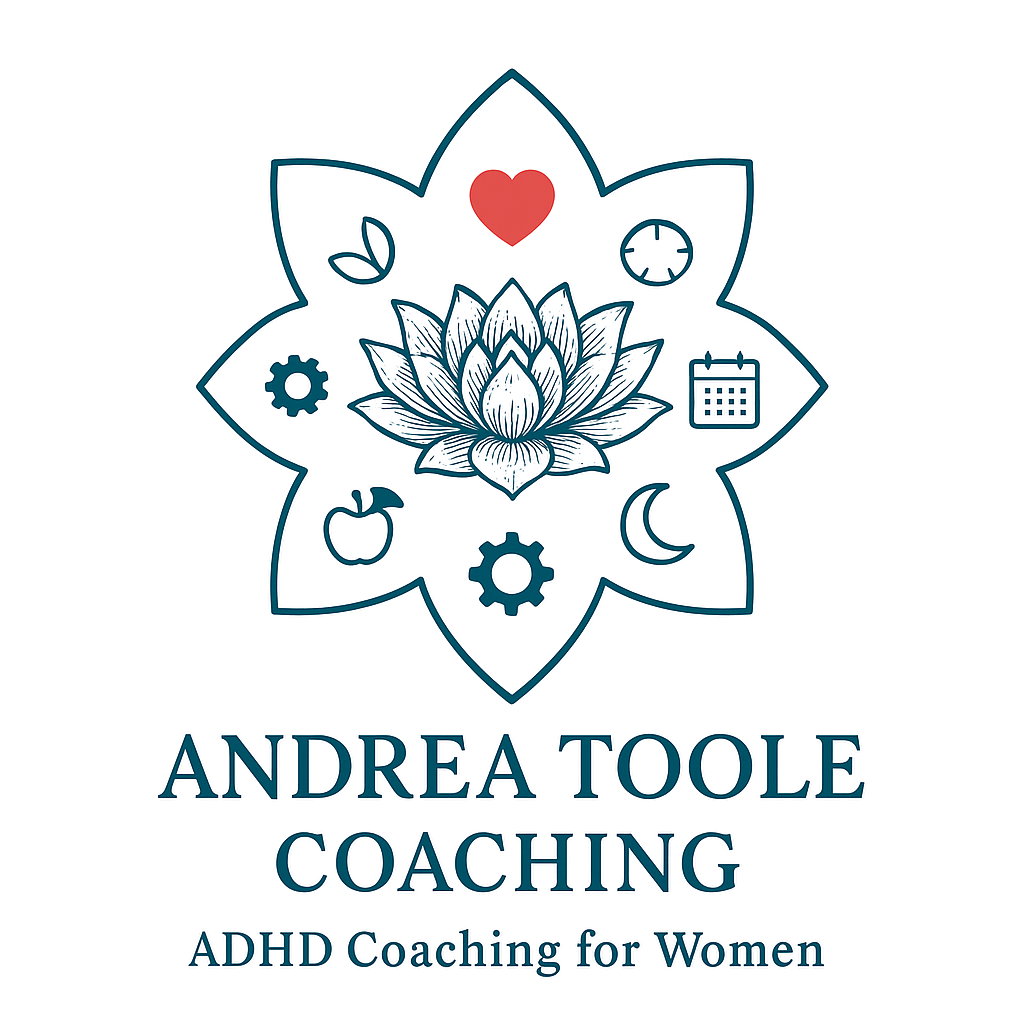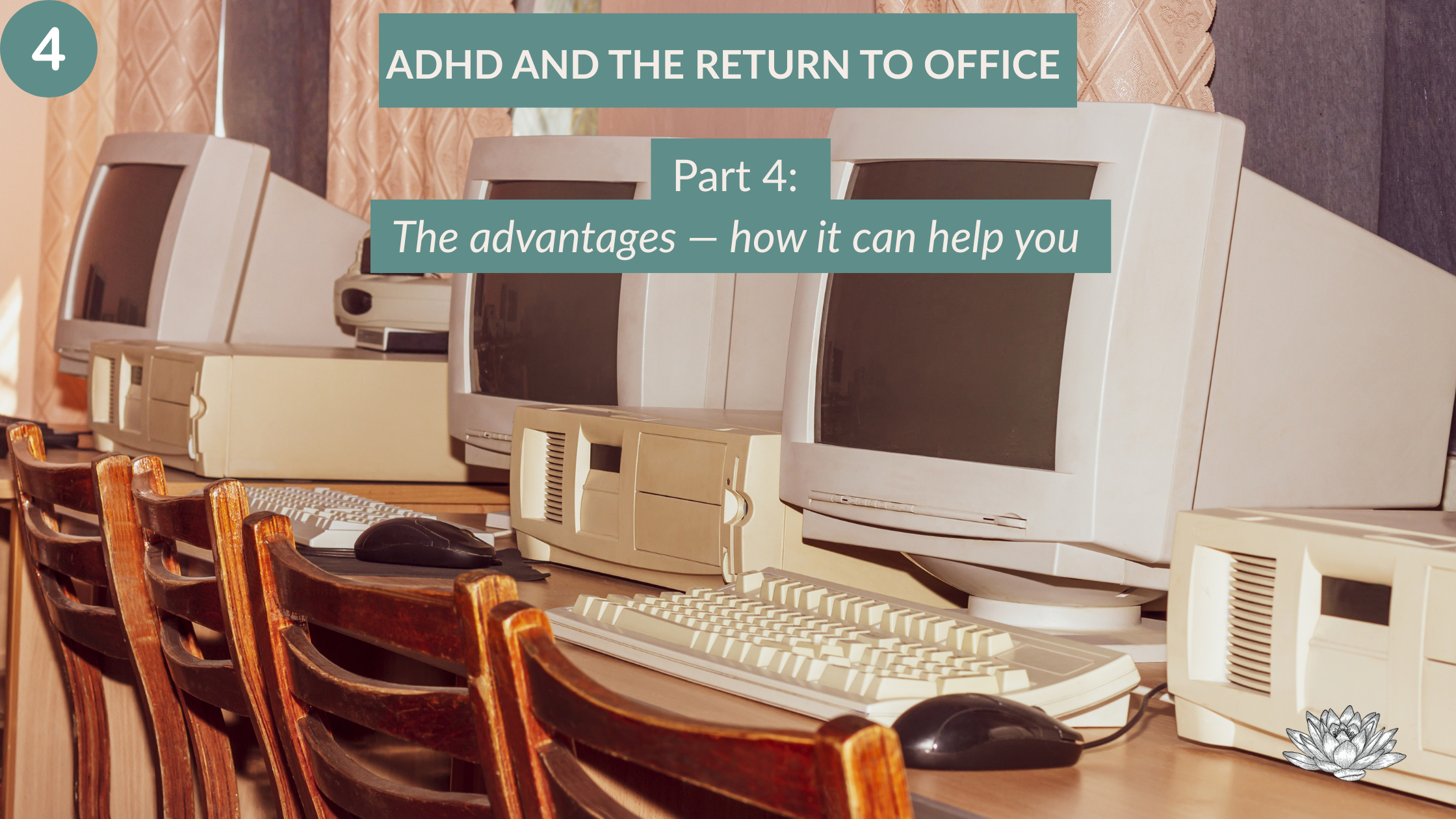ADHD and the office: The advantages you might not have considered
When I began writing this, I was curious about the “benefits of working in an office with ADHD.” A quick search led me to a Reddit post titled “How to survive an office job?” and I couldn’t help but think, “Not with that attitude.”
It feels a bit dramatic, doesn’t it? Sure, the office might not be everyone’s ideal environment, especially with renewed return-to-office (RTO) mandates over the past year, but let’s be honest: it’s not the end of us.
There’s plenty of advice online about surviving office life, avoiding burnout, and minimizing distractions. Much of it is helpful. But my goal here is different. I want to show a more balanced view — the side that explores the advantages of working outside the home — and share practical ways to make them work for you.
In previous parts of this Return to Office series, I’ve unpacked different challenges:
Part 1: The hidden costs of commuting and transitions.
Part 2: Sensory overload in shared spaces.
Part 3: How hormones and women’s health shape focus and energy.
This part explores how the return to office can boost focus and productivity for adults with ADHD when you understand how to work with your brain instead of against it.
I conducted hours of research for this post to support my points with credible sources. This has always been important to me, but now, creating original content and thorough research matter even more due to the prevalence of ChatGPT. While ChatGPT provides initial drafts, I carefully review every word and punctuation mark to ensure my content is accurate, reflects my voice, and avoids cliches associated with ChatGPT. 1 It can be tedious, but my goal is to educate.
Why the “survive the office” mindset doesn’t serve you
ADHD brains are wired for engagement. We need stimulation, movement, and connection to stay in our focus zone.
Yet online, the office is often framed as a fluorescent prison of interruptions and micromanagement.2 That perspective misses something important. Research and clinical practice both show that structure, accountability, and predictable routines help ADHD brains regulate attention and emotion throughout the day.
When approached intentionally, structure and stimulation can work for you. It’s not about surviving — it’s about participating.
Instead of asking, “How do I survive this?” try:
“How can I make this environment work for my brain?”
“What parts of this setup actually help me focus?”
“How can I maximize the benefits and minimize the risks?”
“How can I leverage my ADHD strengths?”
“What systems can I build so my ADHD isn’t a barrier?”
Those are growth-oriented questions that focus on engagement and responsibility. Accountability is the difference between enduring the office and using it as an environment that supports you. Shifting from survival to strategy helps reframe the ADHD at work experience, turning the office into a tool for executive function support instead of a stress trigger.
The power of structure and routine
Having a structured routine brings in built-in rhythm and accountability, which are crucial for successful, effective functioning—especially for those of us working from home.
The main challenge of remote work isn’t usually distraction; it’s drift. Without clear boundaries, days blend together. In-office work provides the cues that help re-establish rhythm: defined start and end times, the visual energy of colleagues, and natural signals that say work time has begun or the day is done. These consistent cues provide structure and focus for ADHD, helping your brain predict what comes next and conserve mental energy.
Predictability as a stabilizer
For ADHD minds, predictability supports executive function at work and eases decision fatigue. The predictability of being at the same place (office, desk) at the same time every day helps people function. If you need to reserve a desk for each day you’re in, you might forget to do that. Being in the office every day helps reduce that decision fatigue.
In a hybrid office-home situation, even if you’re always in the office on the same day of the week, at the same desk, you might wake up in the morning and not remember which location you’re supposed to be at that day. Doesn’t everyone forget what day it is sometimes?
External expectations and the subtle accountability of being around others can boost motivation, as long as that pressure stays light. Too much intensity leads to anxiety or burnout; a moderate level builds healthy momentum.
Shared rhythm and synchrony
Working alongside others also creates synchrony, the subtle coordination that happens when people share timing and movement. As Scientific American notes, our mirror neurons help us reflect the behaviour and energy of people around us, which can increase cooperation and engagement.
This natural synchrony is one reason why office environments can be beneficial for ADHD professionals — it grounds focus and energy in a shared rhythm.
The role of social and managerial support
Social accountability also matters. Talking through challenges with a colleague or manager can spark problem-solving and the development of new strategies. Regular, low-pressure check-ins from supportive managers provide just enough structure to keep progress moving while reducing imposter-syndrome flare-ups and rejection-sensitive dysphoria.
If you’re hybrid, try dedicating your office days to focus or collaborative projects, and use home days for admin or recovery tasks. The goal isn’t rigidity — it’s dependable rhythm.
2. Social interaction boosts dopamine and creativity
ADHD is an interest-based condition. Stimulation and novelty sustain focus, and in-person work naturally offers both. Quick hallway conversations, spontaneous brainstorming, or joking between meetings give the micro-bursts of dopamine that reset attention and fuel creativity. These interactions also reinforce ADHD wellbeing and work-life balance, especially when social time and recovery time are balanced.
People with ADHD are often creative and quick-thinking, skills amplified in dynamic environments. Studies show they score higher on divergent-thinking tasks and frequently generate original ideas that others might miss.
Belonging improves performance
A sense of belonging matters too. A paper presented at The Atlantic Press found that positive interpersonal relationships increase job satisfaction and reduce turnover. In simple terms: when you like the people you work with, you’re more motivated and productive and far less likely to get fired, burn out or quit.
Balancing stimulation and rest
Of course, social energy cuts both ways. Connection fuels focus, but too much stimulation can drain it. Plan decompression time after high-interaction days or use quiet zones for recovery. If you thrive on collaboration, schedule those meetings in person; if small talk leaves you tired, build in breaks afterward.
You need downtime.
And remember: not everything is about ADHD. Everyone — neurodivergent or neurotypical — has preferences, strengths, and limits. Knowing yours is what makes the difference.
3. Physical boundaries support mental recovery
One overlooked benefit of returning to the office is the separation it restores. The structure of RTO helps reclaim boundaries that remote work eroded.
Commuting might feel tedious, but it provides a built-in transition, a cue that helps your brain shift gears between home and work. Years ago, I used to walk 40 minutes to the office whenever the weather allowed. That time cleared my mind on the way there and helped me decompress on the way back.
Without those boundaries, work blends into everything. Emails at dinner. “Just one more task” before bed. ADHD brains, already prone to time blindness, can end up in a constant half-work state that drains energy.
Re-establishing physical and mental separation prevents emotional fatigue and supports recovery. Even if you’re hybrid, create a commute ritual at home — step outside, take a brief walk, or close your laptop with intention. Structure doesn’t limit freedom; it protects it.
These boundaries help sustain focus and productivity for adults with ADHD, even when hybrid schedules make consistency harder to maintain.
4. Opportunities for learning and visibility
One of the biggest downsides of remote work is invisibility. For many ADHD professionals, especially women, being unseen can mean being underestimated.
In-person work naturally increases exposure to new ideas, projects, and mentors. That visibility builds confidence and trust. It doesn’t mean over-performing or people-pleasing; it just means showing up, prepared and engaged, long enough to connect.
For many, in-person visibility becomes a form of career development for adults with ADHD, providing structure, mentorship, and recognition that remote work sometimes limits.
Presence communicates reliability. The consistency of being seen, even quietly, reinforces your credibility over time. That’s not to say that online presence doesn’t, but there’s something different about being in the same space.
5. Structure can’t replace self-awareness
Even with all these benefits, structure alone won’t fix overwhelm. You still need to understand your personal patterns: when you’re the most focused, when fatigue hits, and how to advocate for what helps you succeed.
You don’t have to force yourself into systems that don’t fit, but you do need to participate in the ones that support your growth.
And as I cautioned in my longer YouTube video on women’s health and ADHD, while you don’t need to force yourself to perform or contort into someone else’s productivity standards, you do have to do the work and take responsibility for your results. Accountability is important. ADHD is a reason, not an excuse.
The best workplaces balance accountability with flexibility — a model that supports productivity and ADHD success in hybrid work.
The return to office isn’t a punishment. It’s a chance to rebuild rhythm, connection, and accountability, the very things ADHD brains thrive on when approached with awareness.
Key Takeaways
The external structure supports executive function and focus in ADHD.
Social connection fuels creativity and motivation.
Physical boundaries between home and work help recovery.
Visibility can build trust and career opportunities.
Self-awareness turns structure into a sustainable strategy.
In Summary
You don’t have to “survive” the office. You can design your experience to support how your brain works — using rhythm, structure, and connection as tools rather than constraints.
I can’t solve the logistical challenges that come with returning to the office — higher expenses, childcare, pet care — those are real and complex. Like you, I’m navigating them as I go. I’ve found that being in the office helps me feel grounded, connected, and creative. I like having a place to go. Your experience might differ. I don’t know if I could have even handled part-time in the office when I was in a job that was toxic to my mental health.
If you’d like to explore the rest of this series — including practical strategies for managing sensory overload and maintaining focus — visit the Return to Office Resource Hub.
Returning to the office doesn’t have to mean returning to burnout. With the right approach, it can be where you find your flow again.
Footnotes
1 Every time I see a post that includes “You’re not broken —,” I know where it came from. ChatGPT often suggests that phrase, and I almost always reject it. I’ve even asked it to stop using the “if/then” pattern.
2 Full disclosure: ChatGPT wrote that line. I reject most of its suggestions — I rejected two research hallucinations in this post even though I provided the research — but that line might be my favorite ChatGPT-generated line of all time. The fact that I wrote this footnote before the one above was perfect synchronicity.



